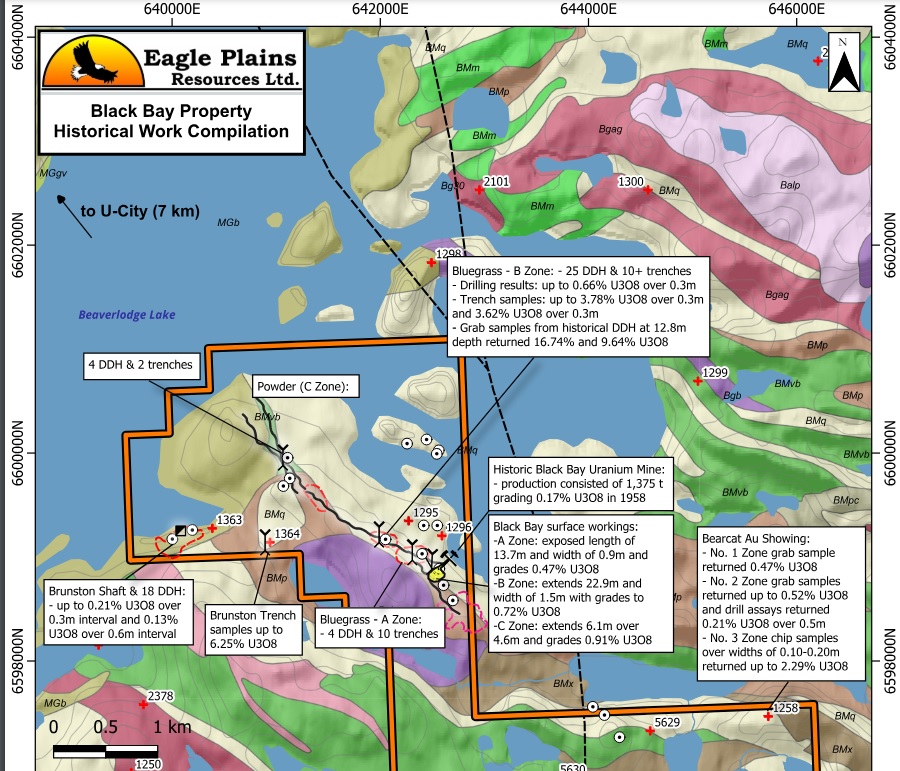
Eagle Plains Resources (EPL.V) and its joint venture partner Xcite Resources (XRI.V) have provided an update on the Black Bay uranium project in Saskatchewan’s Athabasca Basin. There are some good reasons why Eagle Plains staked the project and why Xcite is very interested in Black Bay as the land package includes the past-producing Black Bay uranium mine and hosts the Beaverlodge-style basement hosted uranium mineralization. This is confirmed by trench samples with grades of up to 6.51% U3O8 while historical drill results included an interval of 0.3 meter at an average grade of 0.66% U3O8.
According to the update, the mineralization at the Black Bay mine occurs in drag folds along the contact zone between the quartzites and gabbros. Several small ore shoots adjacent to the contact were developed and according to the two companies, there is a 152 meter strike length and a 731.5 meter down dip distance. The three main ore shoots are pretty narrow, but the grades are good. The A, B and C zones extended over a length of 13.7 meters and 0.9 meters wide with a content of 0.47% U3O8, 22.9 meters by 1.5 meters at 0.72% and 6.1 meters over 4.6 meters of with an average grade of 0.91% U3O8.
The past producing Black Bay mine isn’t the sole area of interest on the tenements. About 600 meters west-northwest of the Black Bay portal, the Bluegrass uranium zone hosts several additional zones that were the subject of a sampling and drill program in the 1950s. In fact, 33 holes were completed along the Bluegrass trend but all holes were very shallow (with an average depth of just 50 meters).
Both Eagle Plains and Xcite are ‘encouraged’ by the tenor of mineralization encountered in the trenches and historical drilling at Black Bay. The interpretation of the historical data is ongoing and once completed, this should result in an action plan for fieldwork.
Disclosure: The author has a small long position in Eagle Plains Resources. Eagle Plains is a sponsor of the website. Please read the disclaimer.

